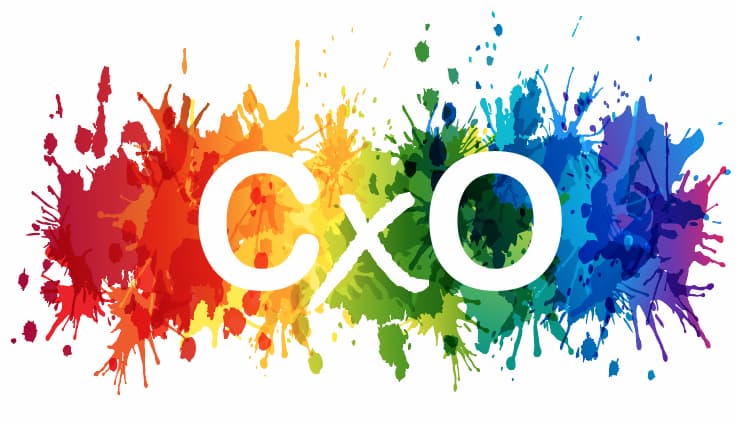To start with, what is a chief experience officer?
A chief experience officer (CXO) is an executive professional who assists organizations in developing targeted strategies and procedures that may increase customer retention.
You might be interested in finding out more about the responsibilities and value of a CXO if you want to increase customer engagement or if you want a career that combines executive and client-facing business responsibilities.
I’ll provide you with more specific information about what a chief experience officer does.
What Is A Chief Experience Officer (CXO)?
To continuously deliver and improve a positive customer experience (CX) is one of a CXO’s main objectives. The organization’s “value proposition” is communicated by chief experience officers, i.e., the factor that will influence customers to choose one business over another. Customers’ preferred communication channels are used, and they speak in their own language, to accomplish this.
Typically, a CXO oversees the entire customer journey. A customer journey map must be created in order to achieve this. Customer journey maps are diagrams that show the steps customers take when interacting with a business. Customer journey maps are data-driven, can foster positive interactions between businesses and people, and can forecast the path of potential customers.
The CXO of the company is in charge of a team that monitors customer interactions and makes sure that the business is adequately responding to grievances, concerns, and suggestions for improvement. The CXO integrates these channels to ensure a smooth flow of useful information between the enterprise and its user base. Corporations interact with their customers through a variety of channels, including social media platforms and customer feedback forums.
The CXO consistently directs responses to user needs due to the constant flow of useful information. This frequently entails using data analytics teams to analyze various forms of communication and customer information as well as social media management tools and teams. To keep track of these resources and gather business-useful customer intelligence, many CXOs also use an executive dashboard. CXOs may oversee digital transformation initiatives and make sure that the user experience (UX) on all client-facing websites, mobile apps, and other technologies is consistent and beneficial.
Many CXOs manage both CX and employee experience (EX), which refers to an employee’s interactions, perceptions, and feelings with an organization from recruitment to exit interviews, with the goal of coordinating the two initiatives. Given that many experts concur that there is a significant relationship between employee and customer satisfaction, this aspect of the CXO role has become more important.
Why Employ A Chief Experience Officer (CXO)?
So you might be asking yourself at this point, “So what? A support team, a product team, and a customer success team are all part of my organization. They have everything under control, so I don’t need an executive to handle everything.” This is not a sustainable strategy, despite the fact that it might be effective in the short term. Optimizing the customer experience won’t always be at the top of their minds because each of these teams has its own priorities, plans, and objectives that they are working toward. It’s important to have a committed executive leading the charge for improving customer experience because focusing on the customer experience has consistently shown to be the best way to prevent churn.
Not to mention, the customer experience has developed into a broad, intricate strategy involving every division within an organization, as well as close coordination between every employee and project within each division. It’s no longer just a matter of asking users if they’re “satisfied” with your product; instead, you need to know how they’re using it, what they expected to get out of it, and how much they’re paying compared to how much value they’re getting, and much more.
Forrester predicted that as businesses around the world begin to recognize the importance that needs to be given to user experience, the number of CX executives could rise by as much as 25% by the year 2020. It’s a data-driven, all-encompassing strategy that, in order to be successful, must be integrated into an organization’s culture and have an impact on every facet of the business.

Salary Of Chief Experience Officer (CXO)
Like most recently created positions, a CXO’s pay ranges widely and is influenced by a wide range of variables, such as the size of the business, the sector in which the product is sold, the applicant’s qualifications and prior experience, and the industry in which the product is used.
CXO salaries, according to ZipRecruiter, range from $25k to 190k annually ($86k median):
Payscale estimates the typical yearly salary of CXOs to be between $93k and $300k ($201k median), whereas Salary.com data places the range a little higher at $150k-$350k ($226k median).
The data from those three reports suggests that, while there are differences between US cities, most CXOs appear to make between $150k and $200k annually.
Small businesses and startups in the early stages will probably pay less and hire candidates with less experience, whereas large corporations and well-established tech firms can afford to pay top dollar for experienced executives with difficult-to-find credentials.
Read about: What Is Chief Investment Officer?
Common Chief Experience Officer Skills
A CXO is a visionary and data-driven professional who aids businesses in meeting customer expectations. Here are some abilities that can assist you in achieving this objective:
Communication
In order to improve customer experiences, a CXO uses effective communication to train staff on customer-focused strategies and to solicit feedback from customers.
Multitasking
For a business, CXOs coordinate numerous customer-focused strategies. Therefore, the ability to multitask is crucial for them to manage all of their responsibilities.
Creativity
CXOs frequently try to use their creativity to come up with original solutions when dealing with issues or developing ways to improve the customer experience.
Analysis
CXOs analyze user data and evaluate competitors’ strengths and weaknesses when developing strategies to spot trends.
The Evolution Of A Chief Experience Officer
CX is increasingly taking center stage for many organizations. Customers expect more individualized interactions with brands as digital interactions and experiences grow.
In many organizations, the position of chief experience officer is increasingly replacing that of chief customer officer (CCO) and chief marketing officer (CMO). In general, a CXO’s role is more expansive than a CCO’s, particularly when it comes to ensuring that internal customers—such as employees, suppliers, and vendors—have a positive experience.
According to Gartner, in 2020, CXOs or their equivalents will be present in almost 90% of organizations. Since 2017, when more than 35% of businesses lacked a CXO, this number has increased significantly.
Duties Of Chief Experience Officer
In A Typical Job Description For A Chief Experience Officer, Specific Responsibilities Include:
- directing groups of people working to enhance user experience across various platforms and touchpoints, including customer service representatives, customer experience specialists, designers, developers, and researchers.
- teaching staff and internal teams the value of comprehending customers, their motivations, the buyer’s journey, and the customer life cycle
- promoting consumer needs throughout the organization as projects and strategies are developed and implemented.
- empowering staff to make decisions with the needs of the customer in mind and improving management’s awareness of these issues.
- championing customer and employee perspectives in the business’ strategic decision-making and working together to develop new, creative ways to improve the customer experience.
- collaborating closely with marketing and advertising to create and roll out campaigns intended to boost client satisfaction, brand loyalty, and reputation.
- Monitoring and evaluating how initiatives are having an impact on the company’s data and key performance indicators (KPIs), such as metrics for customer satisfaction and general customer sentiment.
Although the executive team may be relatively new to managing the employee and customer experience, the Chief Experience Officer position is more than just a title and is likely to remain in place. Companies will require talented personnel who comprehend consumer needs and motivations and can create business strategies that retain customers, increase sales, and increase the bottom line as the emphasis on customer experience as a strategic advantage and differentiator rises.
How To Become A Chief Experience Officer?
Become a chief experience officer by following these steps:
Gain Bachelor’s Degree
Although there are no set educational standards for CXOs, bachelor’s degrees are a typical place to start. The position is applicable to a wide variety of disciplines. You might think about majoring in:
- Public relations
- Marketing
- Business administration
- English
- Political science
- History
- Communications
Study How To Use Marketing Channels
Management of marketing channels and their development make up a large portion of a CXO’s job description. They employ a range of marketing strategies including traditional ones like radio and mail as well as digital ones like websites and mobile apps. Understanding the value of these channels for reaching customers and how to design improvements to improve the customer experience can be learned through experience with these channels. Consider enrolling in online classes that instruct you on how to use these channels in order to achieve this. To learn on your own, look for free resources.
Further Education
To enhance your knowledge of the customer experience and how to enhance it, think about obtaining a master’s degree in a related field. Because the CXO position is still a relatively new title, your courses might not directly relate to the role but instead might speak to the range of the position indirectly.
Gain Experience
Most employers seek candidates with at least 10 years of experience in a related field to fill CXO positions. For assistance in validating important transferable skills, take into account the following functional areas:
- Sales
- Marketing
- Project management
- Public relations
- Communications
- Customer service
- Executive positions
Increase your candidacy for the positions you seek by utilizing your academic background and professional experience with marketing channels.
Conclusion
What a chief experience officer does was the post’s main topic.
Critical investment in the future success of your brand is hiring a CXO to coordinate strategies across departments, channels, and touchpoints and develop an internal culture that truly puts the customer first. After all, it’s relationships that drive revenue–not products.
We appreciate your reading.


![Hot Desking: Top Pros And Cons [Updated]](https://www.techofficesupplies.com/wp-content/uploads/2022/11/Hot-Desking-Top-Pros-And-Cons-Updated-2-600x400.jpg)


